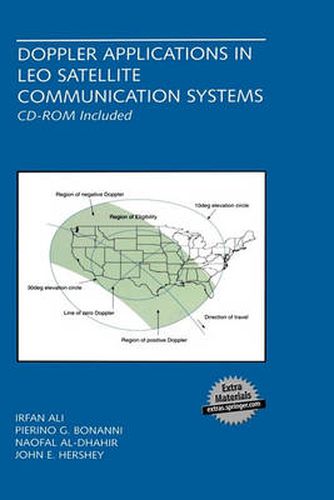Readings Newsletter
Become a Readings Member to make your shopping experience even easier.
Sign in or sign up for free!
You’re not far away from qualifying for FREE standard shipping within Australia
You’ve qualified for FREE standard shipping within Australia
The cart is loading…






This title is printed to order. This book may have been self-published. If so, we cannot guarantee the quality of the content. In the main most books will have gone through the editing process however some may not. We therefore suggest that you be aware of this before ordering this book. If in doubt check either the author or publisher’s details as we are unable to accept any returns unless they are faulty. Please contact us if you have any questions.
This work develops and presents an important class of techniques useful in the construction of little Low Earth Orbit (LEO) satellite communication systems. It centres on the very significant Doppler shift that attends communications through a LEO satellite and shows how this phenomenon can be exploited for an unexpected benefit. The techniques taught in the book should be particularly attractive to system engineers because ground-based transceivers must generally compensate for the large Doppler component and therefore the necessary receiver processing loops are often already in place. This volume starts with a recounting of the characteristics of a LEO satellite and its orbit. The second chapter addresses the LEO orbital geometry and reviews the Doppler effect attending LEO communications. Chapter three is focused on the important task of estimating the Doppler at a ground terminal. Appropriate signal processing algorithms are reviewed. Chapter four is concerned with predicting LEO satellite visibility. Chapters five and six are, respectively, devoted to the use of the significant LEO Doppler as an aid in a new traffic flow control protocol and as an aid for effecting communications power control. The last chapter describes MATLAB-TM based analysis and demonstration CD-Rom software that accompanies the book. The software is, first, a collection of functions useful for calculating satellite orbits, terrestrial contours and regions, and co-ordinate transformations based on Earth rotation. They are functions that have proven fundamental to the analysis of the traffic flow control protocol described in the book. Second, the software includes a set of user-friendly graphical animation routines that aid in visualization of a LEO orbit, its coverage regions, and the protocol.
$9.00 standard shipping within Australia
FREE standard shipping within Australia for orders over $100.00
Express & International shipping calculated at checkout
This title is printed to order. This book may have been self-published. If so, we cannot guarantee the quality of the content. In the main most books will have gone through the editing process however some may not. We therefore suggest that you be aware of this before ordering this book. If in doubt check either the author or publisher’s details as we are unable to accept any returns unless they are faulty. Please contact us if you have any questions.
This work develops and presents an important class of techniques useful in the construction of little Low Earth Orbit (LEO) satellite communication systems. It centres on the very significant Doppler shift that attends communications through a LEO satellite and shows how this phenomenon can be exploited for an unexpected benefit. The techniques taught in the book should be particularly attractive to system engineers because ground-based transceivers must generally compensate for the large Doppler component and therefore the necessary receiver processing loops are often already in place. This volume starts with a recounting of the characteristics of a LEO satellite and its orbit. The second chapter addresses the LEO orbital geometry and reviews the Doppler effect attending LEO communications. Chapter three is focused on the important task of estimating the Doppler at a ground terminal. Appropriate signal processing algorithms are reviewed. Chapter four is concerned with predicting LEO satellite visibility. Chapters five and six are, respectively, devoted to the use of the significant LEO Doppler as an aid in a new traffic flow control protocol and as an aid for effecting communications power control. The last chapter describes MATLAB-TM based analysis and demonstration CD-Rom software that accompanies the book. The software is, first, a collection of functions useful for calculating satellite orbits, terrestrial contours and regions, and co-ordinate transformations based on Earth rotation. They are functions that have proven fundamental to the analysis of the traffic flow control protocol described in the book. Second, the software includes a set of user-friendly graphical animation routines that aid in visualization of a LEO orbit, its coverage regions, and the protocol.